Concrete is the most commonly used construction material used extensively in buildings, bridges, roads and dams. Its uses range from structural applications, to paviours, kerbs, pipes and drains. Concrete is a composite material, consisting mainly of Portland cement, water and aggregate (gravel, sand or rock. Concrete strength is determined by the force required to crush it and is measured in pounds per square inch or kilograms per square centimetre. Strength can be affected by many variables including moisture and temperature. Owing to its advantages and move towards sustainability, concrete technology is being experimented for a better design purpose and energy conservation.
Given below are some of the innovative concrete technology used across the globe.
Translucent concrete allowing light

HeidelbergCement’s approach to transmitting light through concrete is an industry standout. Instead of using acrylic rods or optical fibers, Luccon features translucent fabric that is cast layer by layer into fine-grained concrete, allowing light, shadows, and even colors to project through the concrete with negligible degradation. Because the fabric fibers are small in diameter and the proportion of fabric to concrete is relatively low, Luccon delivers the same strength and durability as conventional concrete.
Due to bends in the fibers and roughnesses on the cut surfaces of the fibers, light transmission is generally a bit less than half the incident light on the fibers, so given five percent fibers, about two percent.As the human eye’s response to light is non-linear, this can still give useful daylighting. In theory, the fibers could carry light around corners and over a distance of tens of meters, with the rate of loss with increasing length depending on the type of fiber and how it is bent.
Translucent concrete is used in fine architecture as a façade material and for cladding of interior walls. Light-transmitting concrete has also been applied to various design products.Several ways of producing translucent concrete exist. All are based on a fine grain concrete (ca. 95%) and only 5% light conducting elements that are added during the casting process. After setting, the concrete is cut to plates or stones with standard machinery for cutting stone materials.
Graphic concrete pattern for precast concrete surface

Murphysboro High School PAC is a landmark of innovation in graphic concrete. A notable aspect of this project is that it was the largest and among the first projects in the United States to utilize Graphic Concrete, a technology. Graphic Concrete allows designers to impart any image or pattern onto a precast concrete surface. This technology is quickly becoming a game changer in the architectural precast concrete industry. The forest pattern was a key design feature in this project which consisted of 19,876 square foot of 12” (4-4-4) insulated CarbonCast High Performance Insulated Wall Panels.
This project involved the ADA compliant construction of a new 700-seat center for performing arts and associated support spaces to replace the current 400-seat auditorium that collapsed. The previous structure was originally built in 1977 out of CMU/Brick, Wood trusses and EPDM roofing. The wood trusses failed under the weight of the roof top equipment. The roof collapsed and caused the exterior walls to buckle.
The new building was constructed utilizing precast concrete walls for the exterior and CMU walls for the interior. This architect’s adopted method of best practice has been to use precast exterior wall panels on all of their designs on auditoriums since. Precast was particularly welcomed in this circumstance (by the school district and all parties), to avoid another structural failure and to meet the need to bring the building up at a faster pace.
Martian concrete as a replacement for concrete components
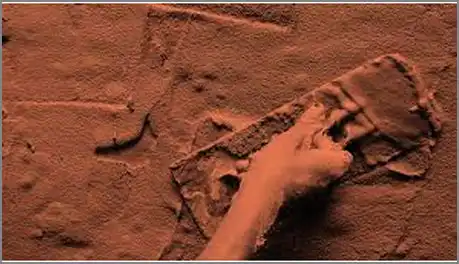
Researchers think regolith on Mars could serve as a replacement for concrete components. The Mars rovers have used gas chromatography, mass spectrometry, and laser spectrometry to determine the composition of martian soil. Mars regolith is mostly silicon dioxide and ferric oxide, with a fair amount of aluminum oxide, calcium oxide, and sulfur oxide. The composition varies from place to place on the planet’s surface because of variability in asteroid collisions and the weathering by wind and water, in ancient oceans and in some modern water flows. But no spacecraft has returned to Earth with actual samples of the material.
Researchers think regolith on Mars could serve as a replacement for concrete components. The Mars rovers have used gas chromatography, mass spectrometry, and laser spectrometry to determine the composition of martian soil. Mars regolith is mostly silicon dioxide and ferric oxide, with a fair amount of aluminum oxide, calcium oxide, and sulfur oxide. The composition varies from place to place on the planet’s surface because of variability in asteroid collisions and the weathering by wind and water, in ancient oceans and in some modern water flows. But no spacecraft has returned to Earth with actual samples of the material.
So scientists at NASA’s Johnson Space Center have used the rover data to develop JSC Mars-1a simulant, a mixture of Earth minerals designed to match the composition and particle size of Mars’s soil. Scientists have used this regolith stand-in for tests of new building materials. JSC Mars-1a is made from basalt gathered from a volcano in Hawaii. Meanwhile, Mueller uses another regolith simulant called BP-1. This material is made from a different crushed basalt from the Black Point Lava Flow north of Flagstaff, Ariz. “
Reinforced “bendable” concrete resistant to cracking

Scientists at the University of Michigan have developed a new type of fiber-reinforced “bendable” concrete. The new concrete looks like regular concrete, but is 500 times more resistant to cracking and 40 percent lighter in weight. Tiny fibers that comprise about 2 percent of the mixture’s volume partly account for its performance. Also, the materials in the concrete itself are designed for maximum flexibility. Because of its long life, the Engineered Cement Composites (ECC) are expected to cost less in the long run, as well.It is a special type of concrete that can take the bending stresses. It consists of a special type of material that makes it flexible. It was developed by the professor victor Li at the University of Michigan.
Bendable concrete is one step closer to hitting the market.new development. Gabriel Arce, a construction management research associate at Louisiana State University is working for this. Arce led a multi-year project titled “Evaluation of the Performance and Cost-Effectiveness of Engineered Cementitious Composites Produced from Region 6 Local Materials,” which experimented with an array of locally sourceable materials to develop a more cost-effective, scalable bendable concrete. The material, which comprises a PVA fiber, fine grain sand from the Mississippi river, and locally-gathered fly ash, costs more than conventional concrete but much less than existing ECC.
Arce, whose project was funded by the Transportation Consortium of South-Central States (Tran-SET), an association of several universities across the southern half of the U.S., hopes to see bendable concrete used to help alleviate problems with this country’s decaying, and often poorly maintained, infrastructure. This past October he put the new ECC to the test, using the material to repair a section of Baton Rouge sidewalk—it’s not building a bridge, dam, or tower, but it was hopefully a step towards building a safer, more durable, and more sustainable world.
Bio Receptive Concrete to colonize structural concrete
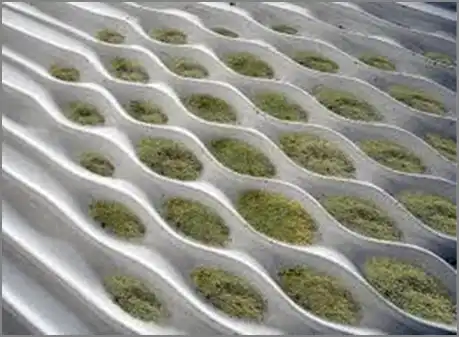
The BiotA Lab at the Bartlett School of Architecture located at the University College London has developed a concrete that encourages plants to colonize structural concrete. Magnesium phosphate is combined with Portland cement into different geometries to promote the growth of mosses, lichens and algae in different areas of the concrete. The plants are able to produce oxygen, and filter or absorb CO2 and other contaminants in the air. This system creates something similar to a green wall without the expense and maintenance.
Currently they are prototyping three different geometries to create panels that can be applied to surfaces of buildings. They are called Baroque, Poche and Vertical. The intended use is for building exterior surfaces including roofs, but there may be other potential applications such as a feature green walls inside of buildings.
Living ‘concrete’ to reduce the environmental impact
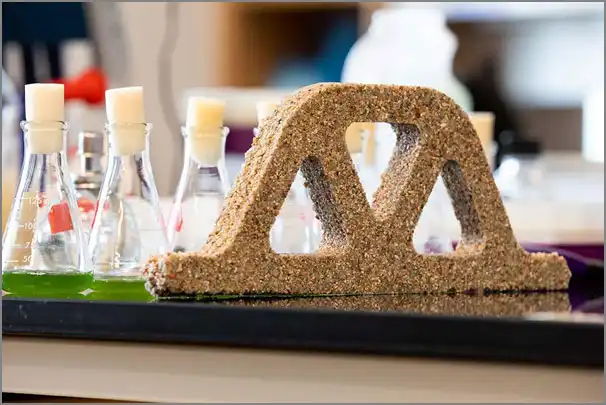
A type of living concrete made from bacteria could one day help to reduce the environmental impact of the construction industry. Wil Srubar at the University of Colorado Boulder and his colleagues have used a type of bacteria, Synechococcus, to create building blocks in a variety of shapes.
The team combined the bacteria with gelatin, sand and nutrients in a liquid mixture, then placed this in a mould. With heat and sunlight, the bacteria produced calcium carbonate crystals around the sand particles, in a process similar to how seashells form in the ocean. When cooled, the gelatin solidified the mixture into a gel form. The team then dehydrated the gel to toughen it, with the entire process taking several hours.
The team liken their living material to concrete, which is a mixture of gravel and sand and cement combined with water. But its mechanical properties are more similar to mortar, a weaker material usually made with cement and sand and found between the bricks of buildings, says Srubar. It isn’t yet as strong as regular bricks. An advantage of using bacteria to create the concrete is that if they aren’t dehydrated entirely, they continue to grow. One brick can be split to create two bricks with some additional sand and nutrient solution. The team showed that one brick could yield up to eight in total after several divisions.
Digital fabrication concrete for a lighter slab of concrete
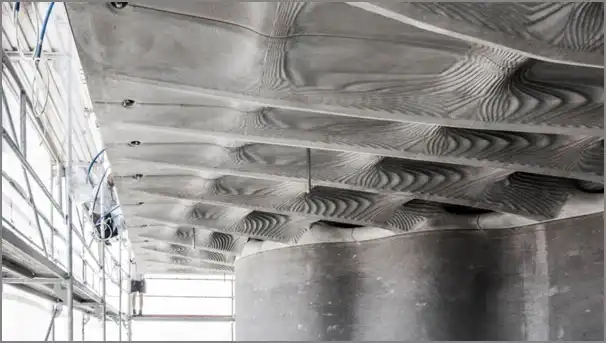
A three-storey home project, known as the DFAB House, is being built in Switzerland by science, engineering and mathematics scholars from ETH Zurich University is a great example of digital fabrication concrete. The process relies heavily on the digital fabrication — the architectural measurements are plugged into the computers, and then the robots begin building. Computer models, CAD software (of which the team have apparently coded their own) and prototyping assists with the fabrication of the elements needed to build the smart structures. CNC milling and 3D printing then finishes the process. Eleven smart slabs are printed into 7.4 metre long, 78-square-metre segments, individually, and then, joined together on-site. The project is purportedly the first full-scale architectural project using 3D printed sand printing techniques.
The arrival of digital fabrication means the parts necessary for construction can be produced on demand. This is much quicker than relying on prefabricated parts. In construction, modular fabrication techniques are getting better than prefabrication ever was. Digital technologies and cutting-edge industrial manufacturing equipment makes the process much quicker and ensures the output is of higher quality. On-site fabrication will become the new normal. The digitization of concrete casting has revolutionized the way both architects and engineers do their jobs. It is now possible to 3D print concrete in novel geometric patterns that defy belief and produce artistic results. However, it’s not only for aesthetically pleasing results — the concrete slabs are more lightweight, too.
Thermal insulating lightweight concrete

Poraver® expanded glass is a lightweight aggregate according to DIN EN 13055-1 and ideal for the production of lightweight concrete (LWC). The structural and thermal insulation properties of this glass enable a wide range of concrete for different applications.
With the expanded glass you can produce purely mineral construction materials that meet all requirements to building physics and building biology with excellent values. Thermal insulation is very important. By adding Poraver®, a suitable monolithic building material can be produced depending on the application. Time-consuming and costly external thermal insulation composite systems (ETICS or EIFS) can become superfluous. Compared to other lightweight aggregates, Poraver® expanded glass has a very positive ratio of compressive strength to bulk density. This enables single- and multi-layer structures with very good thermal insulation properties and at the same time good compressive strength. The production of load-bearing and insulating roller shutter boxes is feasible due to the excellent properties of lightweight concrete, as well as the thermal separation of windows, door frames and other components.
In modern residential buildings with a flat roof, bound Poraver® can be installed as a load-bearing roof insulation. For suspended ceilings, bound Poraver® serves as a levelling layer to cover pipelines and as an insulating base layer for underfloor heating systems. The use of Poraver® contributes to meet the requirements of modern passive houses and ecological standards in construction.
Use of Potassium-geopolymeric (KGP) Concrete Composites
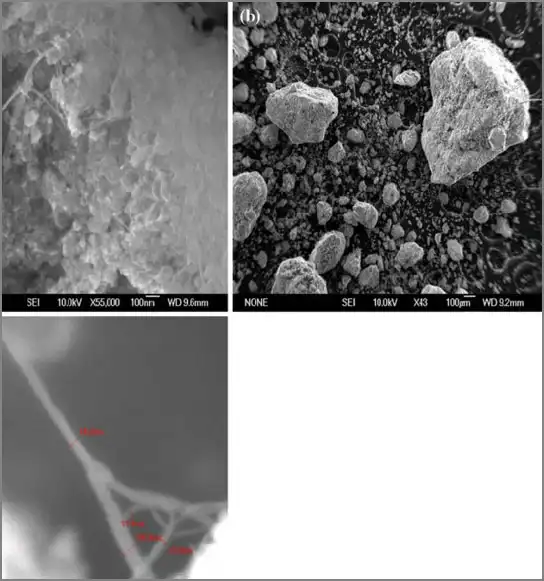
Researchers at Lancaster University have developed a cement mixture, consisting of the waste material fly ash and an alkaline solution, which is capable of conducting electricity. Unlike existing smart concretes, which are typically based on graphene and carbon nanotubes, the new mixture does not contain any expensive materials, and is even cheaper to produce than conventional Portland cement.
In the mixture, known as a potassium-geopolymeric (KGP) composite, electricity is conducted via potassium ions that hop through the crystalline structure, according to project leader Professor Mohamed Saafi, from Lancaster University’s Engineering Department. To make cement you have to mix the fly ash with an alkaline solution, in this case we use potassium hydroxide and potassium silicate,” he said. “When you mix them together they form a cement material, containing potassium ions that act as the electrolyte. The mixture could ultimately store and discharge between 200 to 500W/m2.
The smart cement mixture can also be used to sense mechanical stress on the structures. Changes in stress, caused by cracks, for example, alter the way potassium ions move through the structure, and therefore the material’s conductivity. By measuring the material’s conductivity, changes in the structural health of the building could be detected automatically and instantaneously, without the need to install additional sensors. The researchers are now carrying out further work to optimise the performance of the KGP mixtures, and investigating the use of 3D printing techniques to create different shapes from the smart cement.
High quality Graphene concrete
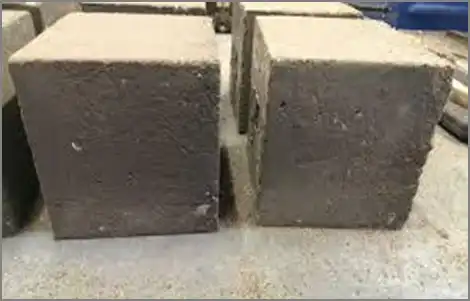
The future applications for graphene can be enormous. ZEN Graphene Solutions Ltd. is a world leading developer of high quality graphene material. Already emerging with new market opportunities, graphene has many exciting applications. ZEN’s challenge as a new high quality supplier is to define and prioritize markets and offer the best value and creation potential by working in collaboration alongside researchers in the industry and in academia. ZEN is actively collaborating with 22 industrial end users and 10 Canadian universities. ZEN is also receiving significant interest from multiple Canadian government agencies who have already directly contributed over $2 million to ZEN’s high quality graphene research and development work. ZEN’s Albany Graphite Project in Ontario Canada hosts a large and unique quality deposit of highly crystallized graphite carbon allotrope that can improve aerospace, biomedical, water treatment, transportation and civil engineering industries. The Albany Graphite Deposit is an open pit and underground project that has a total indicated resource of 24.3 Mt containing 968,000 tonnes of graphitic carbon at a grade of 3.98%. It is currently in the development stage.
Cement made with CARROT extract
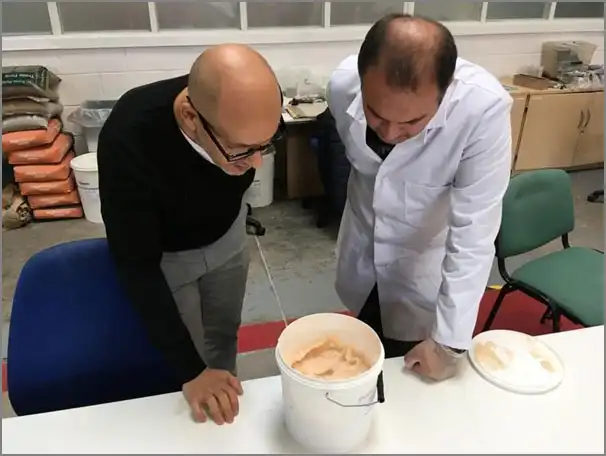
A group of researchers at Britain’s Lancaster University has been using a household food blender to mix particles from the root vegetable with concrete to see if they can produce a stronger and more environmentally sound product. The new material – made by combining ordinary cement with nano platelets extracted from carrots tossed out by the food industry – is resistant to cracks, and stands at up to 80 percent stronger than the conventional product. The composites are not only superior to current cement products in terms of mechanical and microstructure properties, but also use smaller amounts of cement.
The addition of carrots prevents any cracks in the concrete, the team said. It also means less cement is required, therefore lowering the global carbon dioxide (CO2) output. Cement is responsible for seven percent of total global CO2 emissions, according to International Energy Agency estimates. In proof-of-concept studies, the researchers found that the addition of the carrot nano platelets resulted in a savings of 40kg of cement, and of carbon dioxide, per cubic square meter of concrete.
Conclusion
Different concrete technology is being experimented upon for a long time and it will continue. The addition of different materials and the adoption of new designs will further accelerate the innovation in concrete technology.



